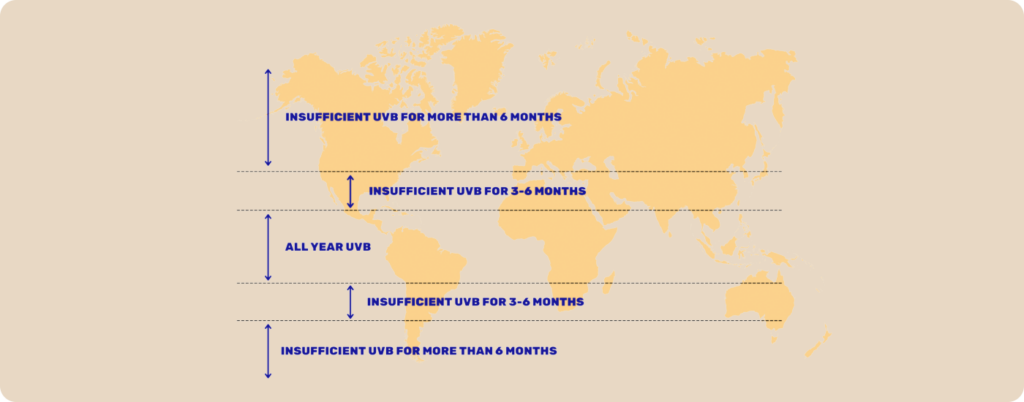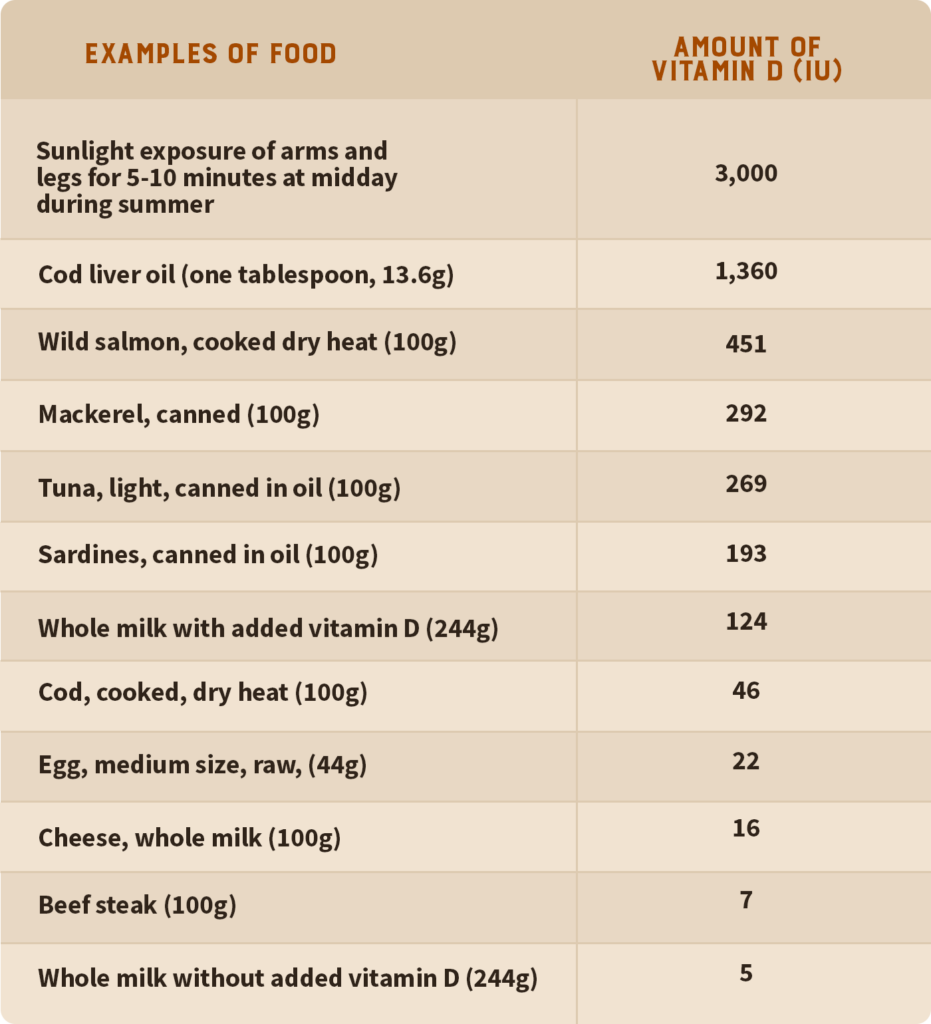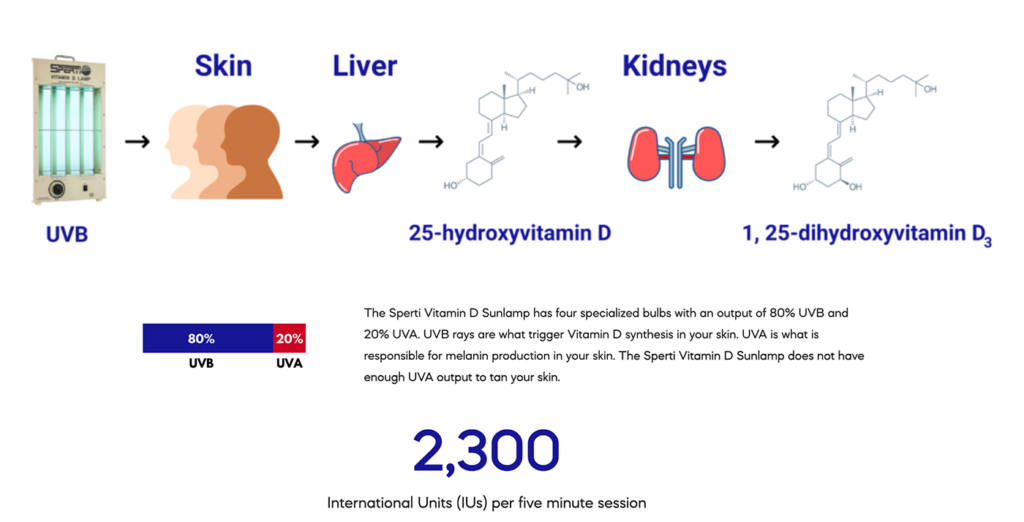PLEASE NOTE: The information in this blog is for educational purposes only. It is not a substitute for professional medical advice. Consult your healthcare provider if you’re seeking medical advice, diagnoses, or treatment.
Imagine a society where large chunks of the population spend the majority of their day inside homes, offices, and schools.
Many of these people live in colder climates with limited sunlight for large chunks of the year.
While those with steady sunlight lather with sunscreen before going out in the sun (if they go out at all). These same people also limit or completely avoid foods like fish, dairy, and other animal foods teeming with nutrients.
This shouldn’t be hard to imagine because this is the current state of the globe!
Unsurprisingly, vitamin D deficiency and inadequacy are global problems. An estimated 1 billion people have low vitamin D levels (1). Projections say that 25% of the global dollar value spent on health care could be saved by improving vitamin D status (2).
This blog will discuss the basics of vitamin D, why deficiency is such a major problem, and strategies for boosting your levels of vitamin D during winter.
If you’re one of the 1 billion people low in vitamin D, this article is for you!
The Basics of Vitamin D: Benefits, Sources, & Toxicity
Vitamin D is often referred to as “the sunshine vitamin.”
While modern society has been taught that the sun is harmful, the benefits and roles of vitamin D are wide-ranging (3, 4, 5):
- Vitamin D has anti-inflammatory effects and can enhance the immune system.
- Blood pressure is regulated by vitamin D.
- Vitamin D is known to promote intestinal health.
- Bones can become thin and brittle without adequate vitamin D.
Vitamin D comes from three sources: sunlight, food, and supplements. Sunlight exposure is the primary source of vitamin D (6).

Certain foods like salmon, mackerel, shiitake mushrooms, and cod liver oil have naturally occurring vitamin D (7).
Egg yolks, beef liver, and cheese contain small amounts of vitamin D3. Milk is often fortified with additional amounts of this vitamin.
Animal-based foods mainly provide vitamin D3, while plants or fungi offer vitamin D2 (8). Both forms travel to the liver to convert to 25-hydroxyvitamin D, or 25(OH)D (9).
Vitamin D toxicity (too much vitamin d) is rare and generally caused by accidental consumption of large doses for an extended time.
Excessive sun exposure cannot result in vitamin D toxicity as excess amounts are destroyed by the skin (10)!
Despite its importance, individual vitamin D levels are often lacking.
Vitamin D Deficiency is a Global Problem
Vitamin D deficiency and insufficiency are global challenges (11).
Certain groups are at a greater risk of vitamin D deficiency. These include pregnant women, children, obese adults, and those of African-American or Hispanic descent (12).
- In the US, 50% of 1-5 year old children and 70% of kids aged 6-11 are vitamin D deficient (13).
- An estimated 50 million teens in the US are vitamin D deficient or insufficient (14).
- Widespread vitamin D insufficiency and deficiency have been noted in India, China, Japan, and Korea (15).
- 40% of the Australian population is thought to be deficient in vitamin D (16).
Isn’t it interesting that the conventional recommendations tell us to avoid the sun and the foods that provide us with this critical nutrient?
Deficiency in vitamin D is associated with a host of challenges, such as type 1 and 2 diabetes, multiple sclerosis, rheumatoid arthritis, and heart disease (17).
Vitamin D deficiency even contributed to the prominence of cesarean sections (C-sections), as vitamin D is vital for muscle function (18).
Are Your Vitamin D Levels Low?
How do you know if your vitamin D levels are low or not?
It’s often suggested that you get your circulating form of vitamin D (25-hydroxyvitamin D or 25(OH)D) checked at least twice a year.
Testing in the spring can reflect your levels following winter, while testing in the fall can offer insight for your summer levels.
It’s best to speak with your doctor about your unique situation, but The Endocrine Society recommends a preferred range of 40 to 60 ng/mL (19). This guidance differs between countries.
To maintain these levels, they recommend the following daily intakes:

Vitamin D deficiency has been defined as a 25(OH)D less than 20 ng/ml and insufficiency as a 25(OH)D of 21-29 ng/m (20).
Vitamin D deficiency symptoms include bone pain, fatigue, weakness, irritability, or fractures (21). However, it’s common to be asymptomatic.
Again, work with a trusted medical professional to better understand your specific needs.
9 Factors That Impact Your Vitamin D Levels
Different diet and lifestyle choices can dramatically impact your vitamin D levels! These include:
1. Age

Age is a key determinant of your vitamin D stores.
Elderly individuals are at risk of insufficiency due to low sun exposure and a decreased capacity for vitamin D synthesis (22).
2. Location
Your vitamin D status strongly depends on your latitude (23).
If you live above or below the 33° latitude, little (or no) vitamin D3 can be produced from winter sunlight (24). People in the far north or south may be unable to produce ANY vitamin D for up to 6 months of the year!

A study from 1988 showed that it was impossible for residents of Boston, Massachusetts, to produce vitamin D in their skin for four months (25).
Vitamin D synthesis from the sun is also impacted by air pollution, interactions with glass, and altitude (26).
Large cities with air pollution (like San Diego or Los Angeles) can contribute to decreased effectiveness of vitamin D3 production in the skin.
Whereas living at a higher altitude can lead to increased production of D3 as UVB has a shorter path to your skin.
3. Seasonal Factors
Unsurprisingly, your vitamin D levels change with the seasons. They tend to be highest at the end of summer and lowest after winter (27).
During the winter, the ozone layer absorbs more UVB radiation, so less UVB reaches your skin (28). Even in the summer, vitamin D production doesn’t occur before 9 am or after 4 pm (29).
UVB sensitivity is closely connected to the sun’s height (30). The higher the sun in the sky, the greater its UVB content.
4. Skin Color
Due to their skin pigment acting as a natural sunscreen, people of color have a reduced ability to make vitamin D3 (31).
Compared to Caucasians, African Americans require about 5-10 times more time in the sun to make the same amount of vitamin D.
As mentioned earlier, African Americans are at a higher risk for vitamin D deficiency or insufficiency.
5. Sunscreen
Sunscreen usage limits vitamin D synthesis from sunlight (32).

SPF 30 sunscreen absorbs around 95-98% of UVB radiation and can cause the skin to reduce production of vitamin D3 by the same amount (33).
So, regular sunscreen application may contribute to vitamin D deficiency (34).
6. Body Weight
If you are overweight or obese, you may need more vitamin D than someone of normal weight.
The skin can still synthesize vitamin D if you’re obese, but greater amounts are stored in fat, meaning less is available for biological functions (35).
Men and women with a body mass index (BMI) above 30 may require 2-5 times the amount of vitamin D (36).
7. Food Choices
Certain dietary choices factor into your levels of vitamin D.
For example, those following a vegan diet or individuals with a milk allergy may not consume adequate amounts of vitamin D from food sources (37, 38).
8. Gut Health
Vitamin D is fat soluble, so its absorption depends on your gut’s ability to absorb dietary fat (39).
Some health challenges like celiac disease, ulcerative colitis, and Chron’s disease may result in fat malabsorption and reduced vitamin D absorption (40).
9. Lifestyle Choices
Specific lifestyle choices can also impact your vitamin D levels.

These include working indoors and religious practices such as wearing a head covering or conservative clothing.
Let’s say you work in an office near a window with plenty of sunlight.
The glass absorbs all UVB radiation (41). So, sunlight that passes through glass, plastic, or plexiglass will not result in vitamin D3 production.
As you can see, modern diet and lifestyle habits may rob you of this crucial vitamin!
5 Strategies to Get More Vitamin D During Winter
Even if your vitamin D levels aren’t where they need to be, there are plenty of ways to overcome this during the winter (without booking a flight to Florida).
1. Stock Up During the Summer
The best way to get more vitamin D during winter is to start in the summer (surprise, surprise).
Vitamin D produced in the skin lasts 2-3 times longer in circulation than ingested vitamin D (42). Sensible sun exposure is often more effective (for all skin types) than daily supplementation (43).
Paul Saladino, MD, often encourages people to stop avoiding sunlight. What this looks like may differ based on your circumstances, but proper sun exposure has a wide variety of benefits.
Some estimates state that 5-10 minutes of summer sun exposure (at midday) on your arms and legs can provide about 3,000 IU of vitamin D (44).
It doesn’t take much!
Depending on your location, you may still be able to synthesize some amount of vitamin D from sunlight during the winter.
2. Eat Foods With Vitamin D
While sunlight exposure reigns supreme, certain foods can help you maintain your vitamin D during the winter.

Seafood nowadays is far from perfect, as there can be issues with heavy metals and other contaminants, but it may still be a valuable addition to your diet.
Paul Saladino, MD, is generally not a fan of cod liver oil as it can be extremely unstable and is subject to oxidation. However, a brand such as Rosita’s undergoes testing to ensure this doesn’t occur, and they don’t use chemicals or solvents during extraction. Plus, their cod liver oil offers both vitamins A and D.
3. Find a High-Quality Vitamin D3 Supplement
Supplementing with vitamin D can be beneficial if you suffer from a chronic inflammatory disease or don’t have year-round access to ambient UVB light (45).
If needed, Paul Saladino, MD, suggests looking for an organic vitamin D3 that uses olive oil as the fat source.
Work with a medical professional to identify the optimal dosage.
4. Use a Sperti Lamp
Sperti lamps were commonly used in the 1940s and 50s to prevent rickets in children (46).
A sunlamp can help your body produce vitamin D due to its output of UVB.

The Sperti has been shown to increase serum 25(OH)D3 levels in healthy adults (47).
5. Use a Tanning Bed
Tanning beds that emit UVB radiation can be a relevant source of vitamin D (48).
Moderate use of this technology may be helpful if you experience limited sunlight in the winter or struggle with a malabsorption syndrome (like IBD).
However, tanning beds come with a variety of risks, such as addiction, and are associated with melanoma development (49).
Just as with sunlight exposure, tanning beds are easy to misuse. A common rule of thumb is that if you consistently get darker without burning, you’re likely using a tanning bed correctly. It can also help to ramp up your exposure very slowly.
Tanning bed usage should be discussed with your medical provider(s).
Take Your Health to the Next Level With Vitamin D
Vitamin D is crucial for your immune, cardiovascular, and bone health.
With more time spent indoors, the use of sunscreen, and dietary changes, a significant portion of the population is not receiving adequate amounts of vitamin D.
Your weight, gut health, age, and geographic location can also affect your vitamin D levels.
Although inadequacy and deficiency of vitamin D are global health problems, a little bit of intention and planning will ensure you have healthy vitamin D levels during the winter.
Thankfully, it’s possible to obtain adequate amounts of vitamin D through sunlight, diet, and strategic supplementation!
Subscribe to future articles like this: